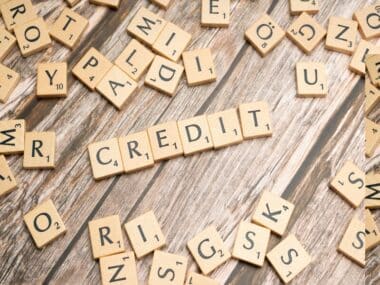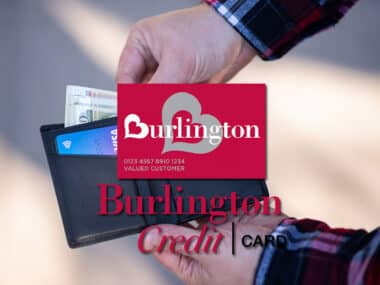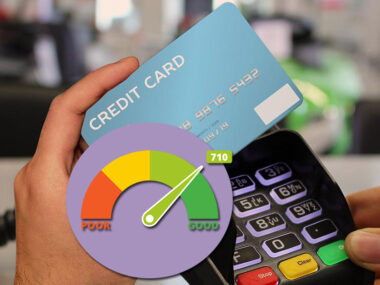A 520 credit score falls into Experian’s official classification of “Very Poor.” Credit scores reflect the borrower’s ability to pay bills on time and successfully handle credit and loans. If a person’s credit history builds up negative marks, the score can fall below 580 and into the Very Poor category.
Experian’s credit score ranges are:
- 300 to 570: Very Poor;
- 580 to 669: Fair;
- 670 to 739: Good;
- 740 to 799: Very Good;
- 800 to 850: Exceptional.
Checking your credit score regularly is essential to building and maintaining good credit. Borrowers can increase their credit score by understanding the root of the problem and reversing the effects. This article will guide those with 520 credit scores back to Fair and Good score ranges.
Table of Contents
Why Your Credit Score Is 520
Although a credit score of 520 isn’t the worst possible score, there’s plenty of room for improvement. Those with a 520 credit score most likely have several serious negative marks on their account and an accumulation of less severe marks.
Bankruptcy
Bankruptcy can decrease a Very Good credit score to Very Poor. When a person files for bankruptcy, it’s because the individual feels overwhelmed by debts. Declaring bankruptcy can erase debts, save your property from being foreclosed, and stop bill collectors from knocking down your door.
However, declaring bankruptcy has consequences for your credit score, often dropping scores by 240 points.
Bankruptcy will remain on a person’s credit history for seven to 10 years. During that decade, borrowers should focus on building a new credit history and staying up-to-date on payments. Besides proving to lenders that you’re capable of handling debt, there’s no way to speed up healing directly after declaring bankruptcy.
Credit Utilization Rate
A credit utilization rate refers to the percentage of your total credit that you’re currently using. For example, if you have a credit limit of $2,000 and you have debt totaling $1,000, you have a 50% credit utilization rate.
Creditors and lenders want to see low credit utilization, showing that you’re able to pay off debts sooner rather than later. Credit utilization above 30% can affect up to 30% of your credit score.
Lowering your credit utilization should help your credit score return to normal. However, if there are other negative marks on your credit history, lowering your utilization rate will only recover a small portion of lost points.
Late Payments
Late payments can lower your credit score by 35%. A late or missed payment means that you were unable or forgot to submit a monthly payment on a credit card or loan.
Failing to pay shows lenders that you’re unreliable. If a payment is more than 30 days late, most credit agencies will report the charge to a credit bureau, lowering your credit score.
You can recover fairly quickly from late payments as long as you’re able to consistently pay bills from that point onward. If you’re able, send in your monthly payments before the deadline or set your account on autopay.
What Can You Do With a 520 Credit Score?
Just because you can take out a loan with a 520 credit score doesn’t mean you should. Taking on more debt can put your credit score in danger and could lead to forced bankruptcy.
With a Very Poor credit score, it’s always better to take a cautious route and focus on improving your score. However, if you need a new credit card or loan, you will qualify for five main options.
FHA Loan
FHA loans are federally backed loans that FHA-approved lenders issue to low-income borrowers. Because they are created for low-income borrowers, credit scores of 520 qualify for FHA loans.
Those with scores higher than 580 qualify for lower down payments and only need to pay 3.5% of the loan upfront. With a credit score of 520, your down payment increases to 10%.
Unsecured Credit Card
It’s possible to take out an unsecured credit card with a credit score of 520. However, very few credit agencies will consider accepting a person with a 520 credit score.
If you are accepted, you will have a variable APR between 25% and 30% and little to no credit rewards. Most lenders will also require you to pay an annual fee of up to $100 to keep the account open and active.
Secured Credit Card
Using a secured credit card is a good option for those with poor credit. These cards are available to anyone, regardless of your credit score. The purpose of a secured credit card is to improve your credit, and the APR for a secured credit card is often under 20%. Secured credit cards are also available to those with no credit history.
Store Credit Card
Many store credit cards are available to those with Very Poor and Fair credit. However, store cards are limited and have high APRs (often between 20% and 25%). Although using a store credit card is an option for a person with a 520 credit score, it’s not the best choice.
Bad Credit Loan
You can take out a personal loan with bad credit. Often, loan agencies that cater towards Very Poor credit scores have high APRs, with some APR rates as high as 36%. Taking out a bad credit loan is risky because failing to pay on time could decrease your score further.
How to Repair a 520 Credit Score
Increasing your credit score from Very Poor to Good opens up better loan opportunities and more chances to qualify for rewards credit cards. Depending on the severity of your credit history, repairing your credit score could take years. With dedication, you can increase your credit score and make yourself a valuable borrower.
Use a Secured Credit Card
Secured credit cards are one of the best resources for those with low credit scores. To use a secured credit card, you will need to make a deposit first. You can then “borrow” the amount you deposited.
In terms of functionality, secured credit cards are very similar to debit cards. The main difference is that the secured credit card reports positive credit history to credit bureaus every month. While using a secured credit card, avoid taking on unnecessary debt on your other credit accounts.
Create a Debt Payment Plan
If you’ve created a habit of avoiding payments on credit cards, you may need to work with a credit repair company or a non-profit credit counseling agency. These businesses help you to create a repayment schedule based on your current income or expected income.
By following a repair company or agency’s counseling, you can increase your credit score from Very Poor to Good.
Credit Builder Loan
A credit-builder loan is a small loan that establishes credit, similar to a secured credit card. A credit union will give you a small loan but will not provide you with access to the loan until after you’ve paid off the established amount.
Once you’ve paid off the loan, you gain access. As you commit to monthly payments, the credit union reports good credit history to credit bureaus.
Image Source: https://depositphotos.com/





